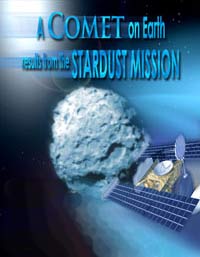

Friday - August 25, 2006
SLAC Today is
available online at:
http://today.slac.stanford.edu
In this issue:
Public Lecture: A Comet on Earth - Results from the Stardust Mission
Cloud Chamber Views the Invisible
SLAC's
Emergency Response Team Seeks Volunteers
 |
 |
|
Friday - August 25, 2006 |
 Public Lecture: A Comet on Earth -
|
||
|
|
||
Cloud Chamber
|
Emergency Response Team Seeks VolunteersGeologists predict a greater than 20% chance of a major earthquake on the San Francisco Bay Area segment of the San Andreas fault in the next 30 years. This fault runs only 1/4 mile from the western end of SLAC property and could cause severe shaking throughout the SLAC site. Other Bay Area faults also have the potential to cause varying degrees of damage at SLAC. The chance of a major earthquake somewhere in the greater San Francisco Bay Area during the next 30 years is pegged at an amazing 70%. If you knew there was a 70% chance of rain tomorrow, you would be wise to grab an umbrella. Local communities, including SLAC, are doing the equivalent. Following a major earthquake, local peninsula communities could be isolated from emergency services and outside assistance for several days or more. In case this happens, communities are training volunteer Emergency Response Teams to assist emergency responders. Menlo Park, for example, has trained 300 volunteers to provide first aid and light search and rescue capabilities. SLAC is a community with its own Emergency Response Team. The SLAC Emergency Response Team (SERT) trains and drills in first aid, triage, light search and rescue, and other emergency tasks that will be essential following a severe earthquake on the peninsula. The team has been in operation since the 1990's. Due to changes in management, SERT had a quiet year in 2005, but activity is now picking up again with quarterly meetings and a new training program. Under Fire Marshal Robert Reek and Assistant Fire Marshal Ralph Kerwin, the SERT membership list is being expanded and updated and the team is actively recruiting new members, with an initial goal of achieving a 30-person team. Members will be educated in the latest emergency assistance techniques through a new certificate program. Beginning in September, on-site classes will be based on the City of Palo Alto's successful PANDA (Palo Alto Neighborhood Disaster Activity) training program, customized for SLAC conditions. This training program will be taught by the City of Palo Alto's Office of Emergency Services and will consist of six half-day classes covering a variety of topics including Introduction to Disasters, Disaster Medical Operations and Disaster Psychology. The classes will be offered on a bi-monthly basis over the course of a year. Due to resource limitations, they will be available only to SERT volunteers. Read more... |
Events (see all | submit)
Access (see all)
Announcements
|
| | ||
|
|
||
 <%
Response.AddHeader "Last-modified", getArticleDate()
'Response.AddHeader "Last-modified","Mon, 01 Sep 1997 01:03:33 GMT"
'Monday, December 06, 2010
%>
<%
Response.AddHeader "Last-modified", getArticleDate()
'Response.AddHeader "Last-modified","Mon, 01 Sep 1997 01:03:33 GMT"
'Monday, December 06, 2010
%>View online at http://today.slac.stanford.edu/. |
||